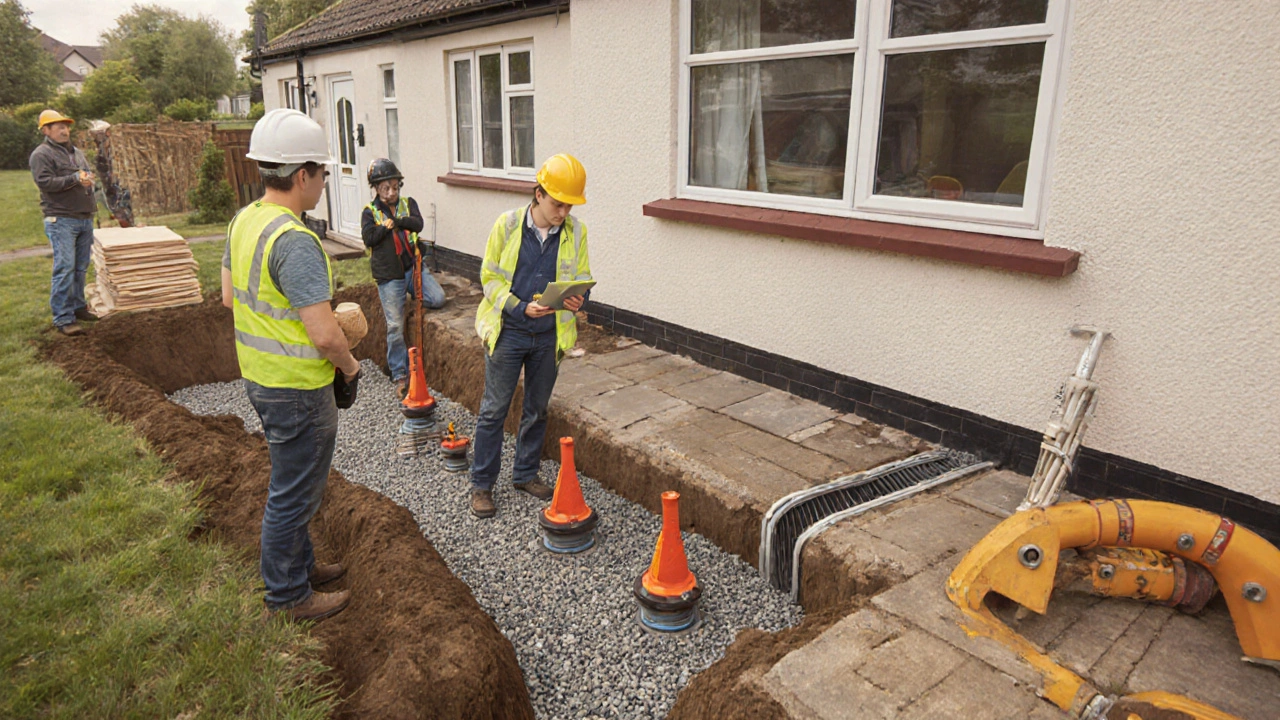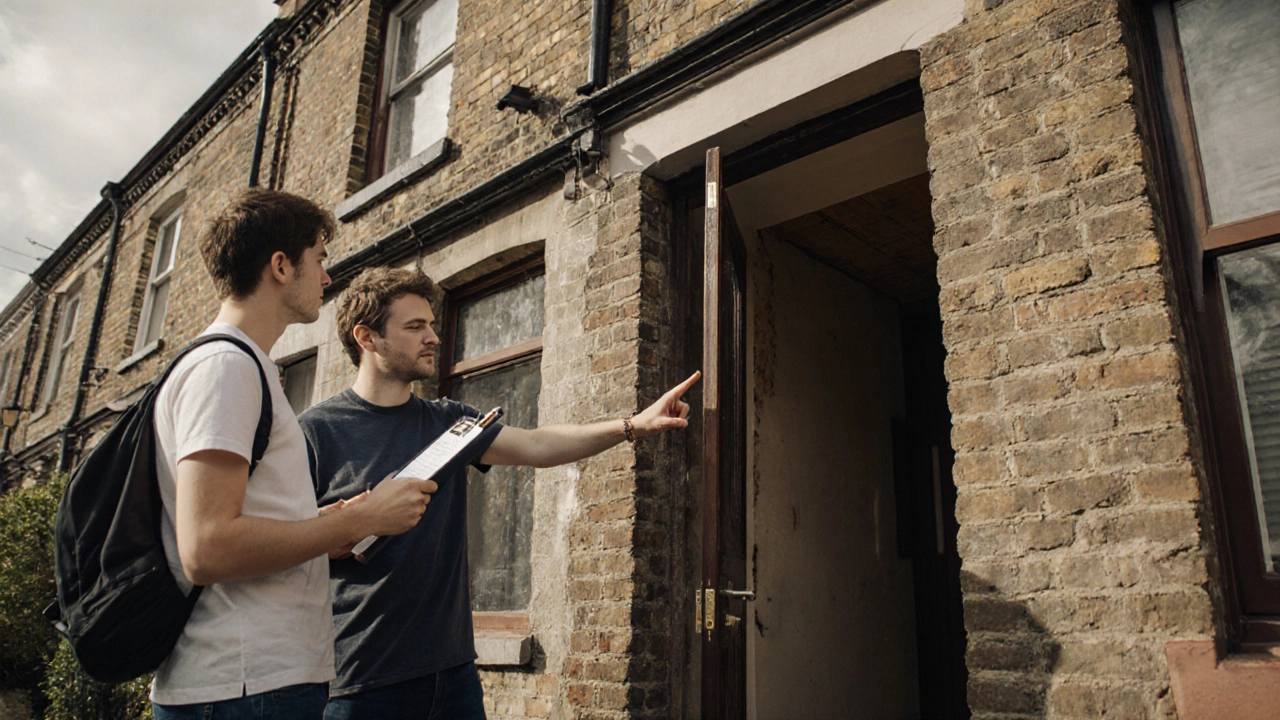Foundation Repair Cost Calculator
Repair Cost Analysis
Calculate whether repair costs are reasonable relative to property value and see mortgage implications.
When you spot foundation problems in a property listing, you’re probably wondering whether it’s a deal‑breaker. A foundation problem is any condition that compromises the stability of a building’s base, such as cracks, settlement, or water intrusion, the answer isn’t always black and white. In this guide we’ll walk through the key questions you should ask, the numbers you need to crunch, and the steps that turn a shaky situation into a confident purchase.
Why foundation issues show up in home‑buying searches
In the UK, about 12 % of older houses show at least one sign of movement in the foundation, according to the Building Research Establishment. Buyers often encounter these clues during a home inspection or when a structural engineer points out uneven floor levels. The problem isn’t just cosmetic - it can affect resale value, insurance premiums, and even mortgage eligibility.
Step 1: Get a solid inspection report
The first thing you should do is commission a thorough home inspection. Look for these red flags:
- Cracks wider than 2 mm in load‑bearing walls
- Doors and windows that stick
- Visible sagging in ceilings or floors
- Water stains in the basement or crawl space
- Uneven brickwork or external wall movement
A qualified inspector will also recommend a follow‑up from a structural engineer if the signs point to serious settlement. Their report becomes the factual basis for every next decision.
Step 2: Understand the cause - soil movement or construction flaw?
Two main culprits drive soil movement in the UK:
- Shrink‑sand: Clay soils expand when wet and shrink when dry, often producing uneven settling.
- Peat decay: In areas with historic peat, organic material decomposes, creating voids beneath the slab.
Sometimes the fault lies in the original build - undersized footings, poor concrete mix, or inadequate drainage. Identifying the root cause tells you whether the repair will be a one‑off job or an ongoing maintenance challenge.
Step 3: Size up the repair cost
Repair costs vary dramatically. Here’s a realistic range for the UK in 2025:
| Severity | Typical Work | Cost (GBP) |
|---|---|---|
| Minor cracks & minor settlement | Underpinning of one or two footings, crack filler | £5,000 - £10,000 |
| Moderate movement across multiple rooms | Full underpinning, drainage upgrades | £12,000 - £25,000 |
| Severe structural failure, voids | Complete slab replacement, soil replacement | £30,000 - £50,000+ |
Ask for at least three quotes from accredited contractors. The cheapest option might cut corners; the most expensive could include unnecessary work. A good rule of thumb: the estimate should break down labour, materials, and a contingency of 10 % for unexpected find‑outs.
Step 4: Talk to the mortgage lender
Many mortgage lenders will refuse a loan or demand a higher interest rate if a significant foundation issue is noted. Some lenders require a valuation amendment that deducts the repair cost from the property’s appraised value. Get a written statement from your engineer and be ready to share it with the lender early in the process to avoid a last‑minute surprise.
Step 5: Negotiate - price drop or repair guarantee?
Armed with the inspection report and repair quotes, you have two bargaining chips:
- Price reduction: Ask the seller to lower the asking price by the estimated repair amount (or a reasonable portion, say 70 %).
- Repair by seller: Insist the seller fixes the issue before completion, with a warranty that covers any post‑sale defects for at least 12 months.
Many sellers prefer the reduction because it saves them the hassle of coordinating contractors. However, a repair‑by‑seller deal can be useful if you lack the cash for upfront work but can cover the cost over time through a larger mortgage.

Step 6: Consider long‑term impacts
Even if you manage to secure a discount, think about how the foundation will behave in the years ahead. Ask your engineer about the future maintenance plan. Typical recommendations include:
- Annual crack monitoring - mark existing cracks and measure any widening.
- Drainage checks - ensure gutters, downspouts, and perimeter drains stay clear.
- Soil moisture management - install a moisture sensor in the garden to detect extreme drying or saturation.
These steps add a modest £200‑£400 per year to your budget but can save you from costly surprises.
Step 7: Insurance and legal safeguards
Before you sign, verify that your home insurance policy covers structural repairs. Some insurers exclude “pre‑existing conditions” unless you disclose them. A transparent claim history with the real estate agent also protects you from future disputes.
Quick decision checklist
Use this cheat sheet before you place an offer:
- Has a qualified structural engineer signed off on the severity?
- Do you have at least three repair quotes with a clear cost breakdown?
- Is the mortgage lender willing to fund the purchase with the repair cost accounted for?
- Can you negotiate a price drop or repair guarantee that leaves you with a comfortable cash buffer?
- Do you understand the ongoing maintenance requirements?
If you can answer “yes” to most of these, buying a house with foundation problems can be a smart investment, especially in high‑demand markets like London where comparable properties sell for £500,000 or more.
Real‑world example
John and Maya, a first‑time couple in Shoreditch, found a three‑bedroom Victorian with a modest settlement crack. The engineer estimated £8,500 for underpinning two footings and installing a French drain. Their lender required a £5,000 reduction in the asking price of £475,000. They negotiated a £7,000 price cut and asked the seller to complete the French drain before settlement. Six months later, the couple is living comfortably, and the property’s value has already risen by £30,000, confirming that a calculated risk paid off.
When to walk away
Not every foundation issue is worth fixing. Walk away if:
- Repair estimates exceed 25 % of the property’s market value.
- The structural engineer reports irreversible damage, such as a collapsed footing.
- The mortgage lender refuses to finance the purchase.
- The seller refuses any price adjustment or repair commitment.
In those scenarios, the financial risk outweighs the potential upside, and it’s smarter to keep hunting.

Can I get a mortgage if the house has foundation problems?
Most lenders will require a detailed engineer’s report and may lower the loan amount by the estimated repair cost. Some lenders offer specialised renovation mortgages that cover the repair work, but you’ll need to provide proof of the repair plan and budget.
How long does foundation repair usually take?
Minor underpinning can be completed in 2‑4 weeks, while extensive slab replacement may take 8‑12 weeks. Weather and site access can add extra days, so always build a contingency into your schedule.
Should I negotiate a price reduction or ask the seller to fix the foundation?
Both approaches work. A price cut gives you control over the repair, while a seller‑done fix can reduce your upfront cash outlay. Choose the method that aligns with your financing and how comfortable you are managing contractors.
What are the signs of foundation trouble I can spot myself?
Look for uneven floors, doors that stick, cracks wider than 2 mm in walls or around windows, and water stains in basements. While DIY checks help, always confirm with a professional inspector.
Will fixing the foundation affect my home insurance?
Insurance providers usually view repaired foundations favorably, but you must disclose the original issue and the repair method. Some policies may raise premiums slightly for a period after the work.
